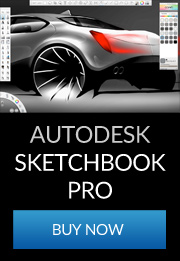Archives for :
Clay
Clay modelling is one of the oldest and most traditional methods used in car design. Studios are divided in their preferences relating to CAD or clay but many believe that it remains one of the best ways to visualise developing designs in three-dimensions.
 |
GM modellers use renderings, sketches and tape drawings as reference to create a 1/4 scale half model. Using a mirror in this way enables modellers to produce results more quickly. With full proportioned models, substantial time is spent balancing one side with the other.In this view it is possible to see the rig beneath the clay. In the rear wheel arch the base can be seen along with the core of light blue modelling foam. |
| Clay has been used since the earliest stages of car design and emphasises the strong links between three-dimensional automotive styling and sculpture. Working on the form of a vehicle in clay is a very tight form of sculpture, reliant upon a expert eye and an advanced perception of form and proportion. |  |
|
The Principles
There are several stages to producing a clay model.
First, the scale of the model is determined. Using a package drawing or profile sketch, the vehicles dimensions are worked out and the scaled dimensions calculated.
Using the core dimensions, a rig is built. A rig is designed to be a solid working base for the model as it is built and developed. In the case of small scale models – such as 1/4 scale – the rig will be designed to be mounted on a bench where modellers can stand to work on the model. It is often preferable to position a model to create the most lifelike perspective. In addition to providing a base for the model, the rig is also a means of reducing the amount of clay used on a model. Rather than using expensive and heavy styling clay all the way through, an inner core of foam is often used on which the clay is applied.
Manual Method
With the rig configured, clay is applied. Using a system of ’10-lines’, reference points are transferred from the drawings to the model. Clay is built up to match the profile from the drawings and is then added to fill out all the proportions.
| From here, designers can either rigidly follow their drawings, creating guides and templates to help develop the model from the package drawing, or they can begin to experiment and develop the form freely. The beauty of automotive styling clay is its ability to be reworked and continually adjusted. This freedom of form development is rarely matched by computer. |  |
| Chevrolet designers work on a full scale Corvette model. Dynoc has been applied to give the impression of real glass and upper body paintwork. Real wheels add to the effect whilst designers make final adjustments to the surfaces. |
Automated MethodInstead of designers and modellers labouring over a clay for weeks, many car firms are now in the habit of sending a CAD model directly to a specialist milling machine. The machine can precisely mill out the form and proportions of the 3D computer design in a relatively short period of time, although humans may still be called in to finish the surfaces or make slight adjustments.Although most aspects of a design can be resolved on computer, especially with the aid of virtual reality evaluation, almost all companies will still produce a full size clay towards the end of the process. The cold light of day can produce suprises that manufacturers want to be aware of before a vehicle enters tooling and production phases. |
 |
Once a vehicle is completed, one of several next steps may be taken. If the vehicle is to be shown as a concept, it might be painted and detailed but will more likely become the template for ‘hard modellers’ to use to create a production look-a-like with individual panels, real glass and details as well as an interior.
If the vehicle is ready for production, it will usually be scanned using 3D digital equipment which will in turn create a new CAD wireframe model. This will be tweaked by CAD specialists to remove imperfections before being passed on to engineers who will begin the arduous process of creating panels, componentry, drivetrain and propulsion based on the design.
Of course, if a vehicle was simply an in-house research project, as many are, it may never be seen by the public; in fact the clay may be reused in later projects.
|
 |
|
 |
